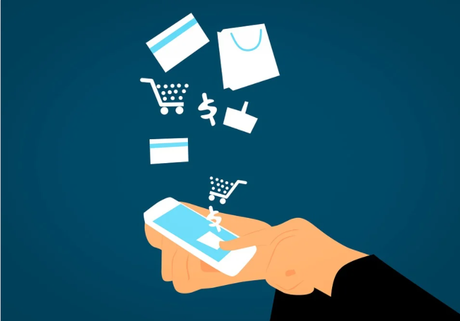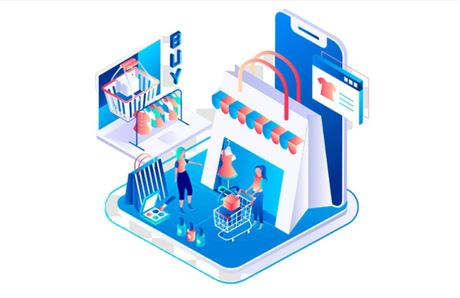The outbreak of the coronavirus pandemic has impacted all spheres – be it human population, online retail, or traffic on e-commerce sites like Amazon.com. E-commerce sales grew during the initial six months of 2020 as online. As online retail sales have been projected to touch almost $6.5 trillion by 2023, a spurt has already been witnessed in the ecommerce segment. But, ever since the Covid-19 outbreak, online buying has gone into a hectic mode. It has made the biggest retailers struggle to match the extraordinary consumer demand.
Retail intelligence company Stackline, assessed ecommerce sales all over the U.S. and aggregated a list of the expanding and receding ecommerce product categories compared between March 2020 and March 2019 which showed unexpected results.
Buying Behavior Trends
With more and more people adapting to the existing living conditions, following the pandemic, their buying preferences focused on their needs. Though panic buying did lose its pace in few countries, buyers took to storing the supplies, more on stockpiling pantry products and consumable items.
The initial eight months after the breakout of pandemic produced an online sales of $497 billion, as stated by Adobe Analytics. Adobe has assigned to the pandemic an additional online spending of $107billion. As far as August, there were 130 days in 2020 when online sales crossed $2 billion mark, in comparison to 2019 when online sales surpassed $2 billion for only 2 days with no holiday season. Adobe Analytics had based their data of online sales from trillions of visits to retail websites by anonymous buyers and product categories from the leading 100 retailers. Data is drawn from 18 product types that includes electronics, grocery, personal care, garments, books, office supplies, appliances, jewelry, toys, and furniture besides others.
According to a report stated by the research enterprise Kantar Group, the pandemic has significantly expanded the amount of essentials and food sold onl8ine. Online sales of grocery continue to grow as the Covid-19 pandemic rages.
In contrast, cameras, luggage, bridal apparel, athletic shoes,formal wear of men, and women’s swimwear were some of the categories that saw a decline in online sales. Irrespective of whatever list whether declining or fastest growing a product falls under, it has emerged that the corona pandemic has affected online retailers of every type in an advantageous or disadvantageous way.
The Current Normal?
The biggest retail giant, Amazon has declared that it is not possible to keep pace with customer demand. Due to it, now Amazon will delay the facilitation of non-essential products, or in some instances will not take orders for products that are non-essential.
This creates a situation that presents both positive and negative effects, as the new transformation creates an extraordinary demand and also brings an untimely culmination for the rest.
At the same time, the question continues as to whether this change in the behavior pattern of consumers will recede the curve, or has become our current normal?
An Overview Of The E-Commerce Scenario In The Midst Of COVID – 19

The landscape of ecommerce so far as B2B and B2C sale of online physical products is concerned is a bright one, as a spike in demand of certain products was witnessed during the outbreak of the pandemic. At the start, most of the businesses and customers reacted by stocking products. A stockpiling of medical provisions like hand sanitizers, surgical facemasks, and disinfectants, along with household necessities like toilet paper and foodstuffs were observed.
Businesses had to resort to teleworking, while homebound customers had to keep themselves busy remotely. Due to social distancing directives issued by many governments, lockdowns or short-term closure of “non-essential businesses, a spurt in online buying was witnessed with consumers preferring online shopping either via internet or mobile.
A number of brick-and- mortar stores have switched over to e commerce resources. Likewise, a rise in consumers thronging to digital services was also seen, with a spurt in the business of such services and telecommunications operators also felt encouraged to upgrade their network potential to provide favorably priced or free data and packages.
As the commercial activities are interlinked and depend on supply chains, such a switchover to online sales of B2B and B2C rested on manufacturing activity and also service availability. But, such services got disrupted due to the government measures for containment of the virus outbreak. There was a halt in the manufacturing sector of many economies resulting in labor shortages and receding production. Another aspect viewed during the corona crisis was that online purchasing of products faced similar bottlenecks in the supply chain as physical purchases did. Also affected was the international transport segment due to the operation of new health directives, which seriously disrupted international modes of transport whether by air cargo,sea or land.
Two-Thirds Of Buyers Hiked Online Shopping Due To Coronavirus
Online retailers have found 2020 as a year of frantic activity, as due to corona, many of them profited from new business with shoppers staying indoors and stores shut down temporarily.
Many retailers from the apparel industry in the U.S. went all out for finding a different way to send products into the hands of the shoppers besides shipping as it can be less economical and not arrive instantly for shoppers. Several apparel retailers were urged, particularly retail chains to promote curbside pickup for their orders generated online. By June 2020, curbside pickup due to online orders had hiked to 34.1%. This occurred because the primary source of revenue for retail chains which were closed down due to the pandemic, but could manage online orders for curbside pickup.
Ecommerce sales has stimulated a rise in click- and-collect, mainly curbside pickup, that lets consumers in the US go for quick purchases with minimal human contact. It is now expected that a growth in click-and-collect will shoot up to a figure of $58.52 billion, as indicated in reports of Infutor. It has forecasted a growth of 18% in ecommerce for the US in 2020 with a significant increase in digital purchaser and the average spending by each buyer. Such gains throw light on the impact of the pandemic on new purchasers becoming a part of the online retail segment, including a growth of 12.2% for those in the age bracket of 65 plus.
Also Read: Car Repair WordPress Theme
Main Takeaways From The US Ecommerce 2020 Report

An Understanding Of The Way Pandemic Has Boosted Web Shopping
Latest research offers a knowhow of the way pandemic has diverted consumers towards web shopping. In fact, in present times 50% of customers carry out almost 75% of their shopping online, while at least 25% perform over 90% of their purchasing on the web as per the findings of personalization software provider Qubit.
In addition, two-thirds of consumers have taken to online shopping due to Covid-19, and a marginal 28% of customers find it comforting to visit the stores. Almost 36% hold that they plan to go back to stores within two months, whereas 19% of shoppers are planning to visit them in 2021. Still, 13% declared that they may after a vaccine, and those who would never were 4%. This survey having 809 respondents from the U.K. and the U.S. was carried out in July 2020.
However, 44% respondents intended to do more online shopping during the holiday season compared to last year. Upon being questioned as to with the opening of stores do they plan to shop online in greater or lesser numbers? At least 35% of consumers were of the view that they plan to carry out more online shopping while 11% stated they will shop less online than they used to do before the pandemic.
Another research by GlobalWebIndex reveals that 49% of internet users globally in the age slot of 16 – 64 anticipate more frequent online shopping after the culmination of the pandemic. This figure amounts to 36% in the U.S. To add up, 41% of internet visitors worldwide intend to make use of mobile payments more frequently post pandemic. Within the U.S. such percentage of users figure around 16%. This research was aggregated from 15,271 buyers across 18 countries between 29 June to 2nd July.
Further data available from the firm also indicates a rise in ecommerce traffic for supermarkets by 35% for the July 12 weekend as compared to the average traffic related to the same category from the month of Jan 6 – Feb 16 prior to the spread of the pandemic globally. Sports gadgets spiked to 34% , jewelry plus watches 17%, fashion 2%, cosmetics 13%, home decor and furnishings 6%, and luxury products 0.5%.
Industry Getting The Highest Traffic Spikes And Online Searches
Demand for consumer goods remained high during the Coronavirus impact and books including audiobooks witnessed a rise with Audible and Scribd grabbing the top spots. Though, websites such as Chegg and Scholastic figure among the go to sites gaining top positions for students under compulsion to remain indoors at home and study.
Health eCommerce Up By 9%
Health e commerce labels also received an increased traffic across every industry. Large pharmacy chains are featuring in online searches – CVS, Walgreens, and others. A telemedicine startup Goodrx emerged as the third most popular site visited that lets tracking the prices of prescription drugs and rebates on medications.
Home Decor Gained 7%
Your house during the pandemic turns into your workplace, your office, a restaurant, or your school, and also places you always visited. This made several consumers search online for home decor whether for enjoyment or pure utility. So Home decor brands became the most visited sites.
Retail (+6%)
Retail also figured in the segment with more than 14 billion traffic monthly. In fact, within 3 months, it expanded with more than 1.5 billion new site visitors. With every brick and mortar retail remaining closed or regarded as risky to visit, the daily requirements from groceries, hand lotions, to the latest mobile charger need to be bought online. Therefore, it is not amazing to find the blue chips of e commerce among the top ten.
Walmart, Amazon, Apple, eBay, and Aliexpress – these retail giants are clear winners of the Covid-19 crisis.
Fashion profited More Than 5%
Remaining at home directive failed to discourage buyers from trying out fashion ideas. More so, because we will together overcome the throes of this COVID crisis and come out of our homes Not only that, several clothing brands opted for big rebates plus sales to push customer demand.
Probably, your local outlets are presently closed, but nearly 2.6 billion site visitors have accessed fashion ecommerce sites like Nike, H&M, Wildberries, Zara, Macy’s and others.
Also Read: Competitive Analysis For Ecommerce Store
Effect Of Coronavirus On Rise In Consumer Interest Regarding Products
We already had a fair idea of the going ons within the expanding ecommerce industries, so let’s gain some insight as to the products that are witnessing popular demand.
Home gadgets and appliances, refrigerator, air purifier, freezer, sports gear items, and hobbies headed the list, with people conducting their leisure and relaxing activities inside and creating an inclusive space within their homes. The searches monthwise for items from these segments have doubled and at times even quadrupled.
The risen demand for sports gear catered to kettlebells searches that saw a spike four times within a month. The other products include stationary bikes, equipment for exercising, and Peloton.
You can anticipate refrigerators, air purifiers, and freezers to shoot up in popularity with people intending to stock their homes with groceries and food and spend an extraordinary span of time inside their home. What turned out to be baffling was the Hobbies product segment which grew enormously in demand. In addition, “bidet” featured as the product that was widely searched across the home appliances segment.
Also Read: Best WooCommerce Apps For Your Online Store
Walmart’s Most Wanted Products During Covid Pandemic
Walmart is among the huge ecommerce players during the outbreak of coronavirus.You can know about the most fundamental differences in consumer preferences when you analyze Walmart.
It appears interesting that the leading 20 most accessed product pages of Walmart does not concern groceries. Consoles of Video games with Nintendo switch consoles completely overshadows the market. Bath tissues and toilet paper, hand sanitizers, and disinfecting wipes are the main products viewed on ecommerce sites of Walmart.
eBay’s Most Wanted Products During Covid Pandemic
Another steady player in the ecommerce landscape is eBay. Its product categories that received a massive response during the pandemic were gift card coupons, women’s apparel, smartphones. Accessories of auto parts and truck parts, fishing boats. The highest product demand was viewed for hobbies and fashion.
The Present Roadmap For Ecommerce Businesses

To conclude, it can be said that the coronavirus situation augurs well for ecommerce businesses as it is to stay during the volatile economy and declining purchasing power of the consumers.
However, the economic problems will soon tide over, with a steady pattern of consumer behavior. Ecommerce habits will become the common norm as people switch to online shopping. Though, with a short-term perspective, you may have doubts in investing for your ecommerce business, but in the long-run, it is likely that you reap double on its advantages.
Interesting Read:
BEST WORDPRESS MEMBERSHIP PLUGINS
BEST WORDPRESS THEMES FOR BUSINESS
